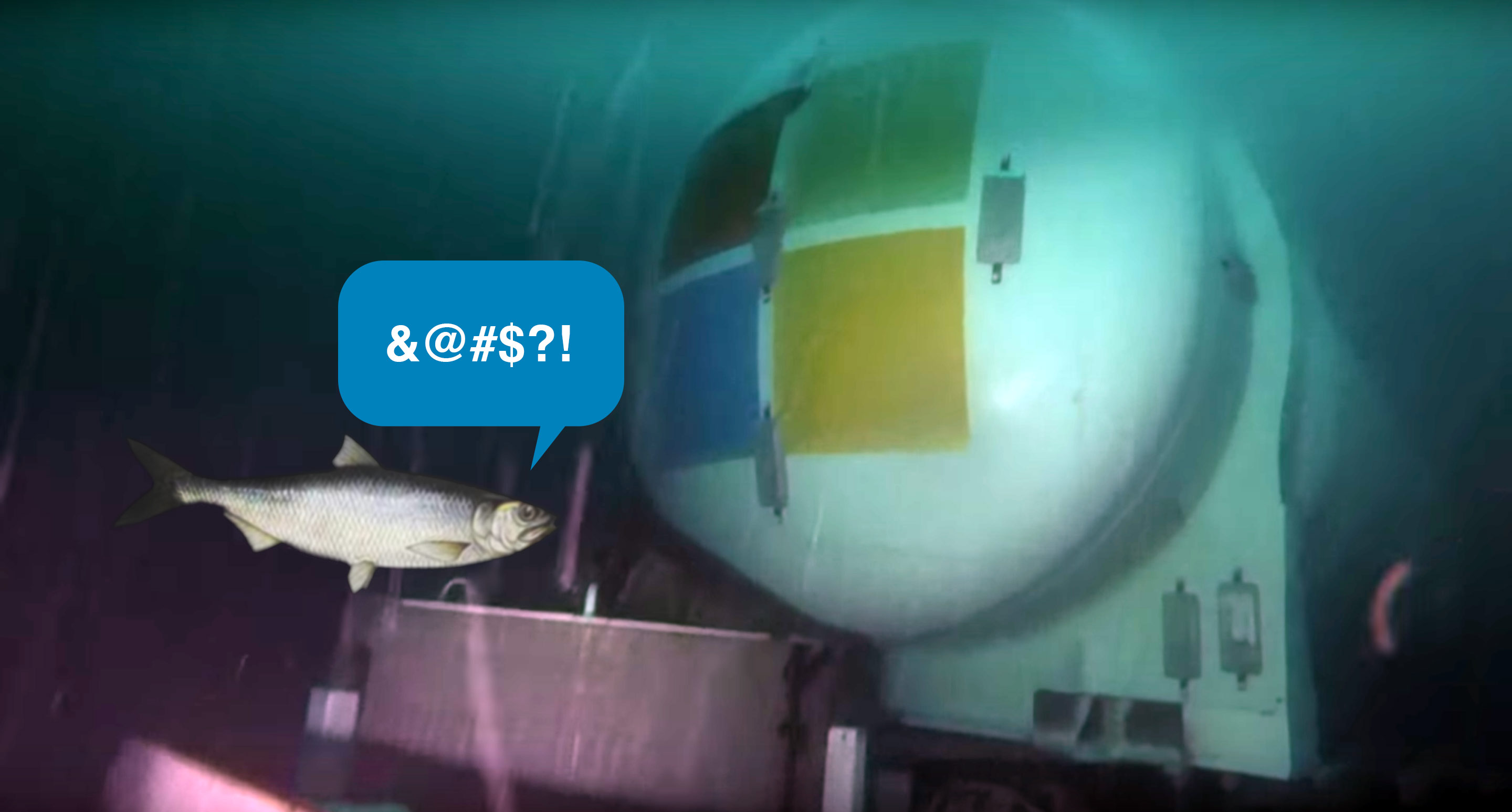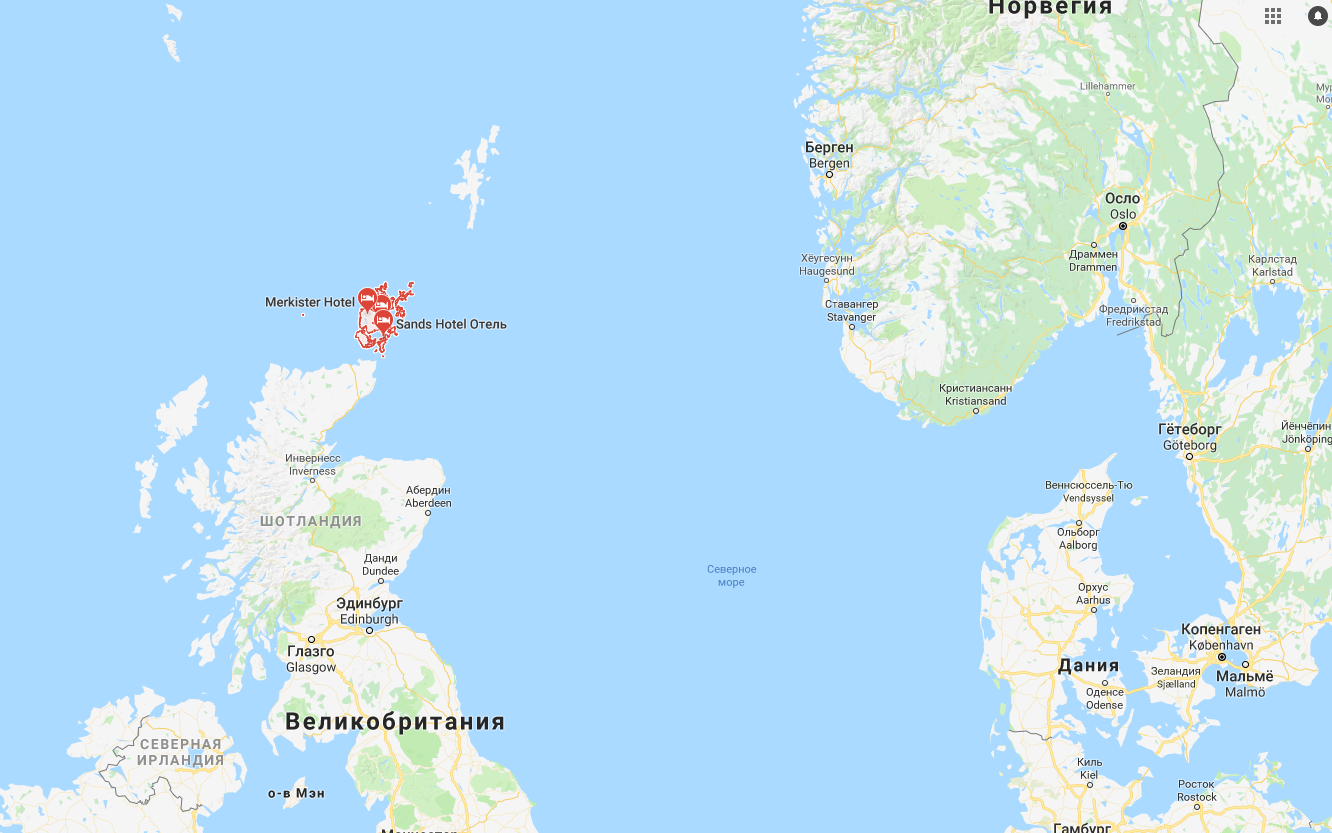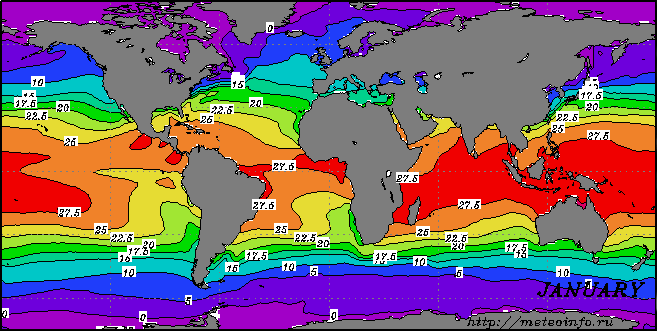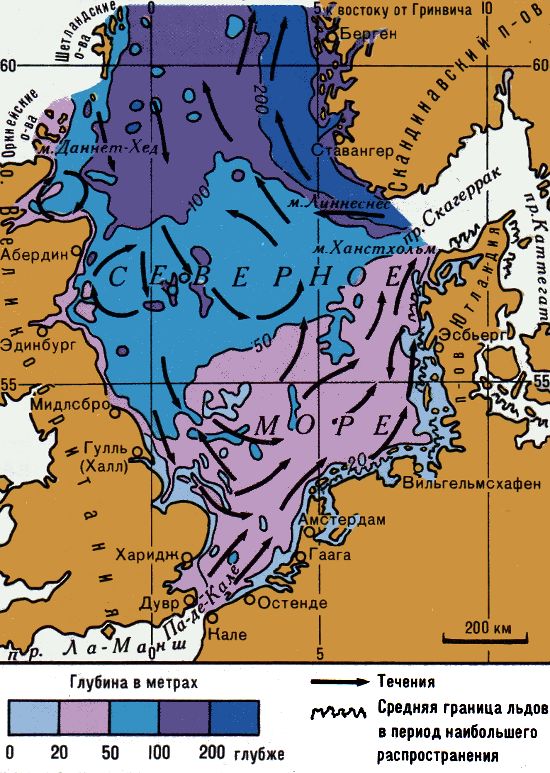As part of the project, Natic
Microsoft has lowered its data center to the bottom of the North Sea . Some environmentalists fear that placing a heat source could harm the environment. Microsoft's Ben Cutler
claims that "in the worst case, the temperature could rise by thousandths of a degree .
" I decided to count and find out who is right.

The main commercial fish in the North Sea is herring. Long-term intensive fishing of herring, flounder, haddock led to a reduction in their stocks, to a decrease in the recovery capacity of these species. In addition, since the beginning of the 60s, the sea has become one of the world's largest centers for the extraction of oil from underwater subsoil, which adversely affected its biological conditions, and above all, its fish resources. Now the environmental situation in the North Sea is assessed as pre-crisis. Let's try to calculate what will become of the temperature if the data center is working at full capacity, and whether the herring around will become even sadder.
The data center was flooded near the Orkney Islands (Scotland).

Judging by the map of climatic values on the surface of the world's oceans, this zone falls in the distribution of 5 to 10 degrees.

But this is on the surface of the water, but what is at a depth of 37.5 meters, where was this data center “dropped”? Here we come to the aid of an
informative article about the North Sea , from which it follows that the temperature on the surface of the water and at the depth, if different, is insignificant. But in areas with a depth of up to 50 meters there is a homothermy or a state close to it.
Homothermia is when the temperature is the same in a large volume of water and is equal to 4 ° C. This correlates with the distribution map, so let's take for the fact that the temperature of the water around the data center is equal to 4 degrees.

Judging by the maps, there are no particular events in the Orkney Islands zone. So for calculations we neglect the fact that the temperature can fluctuate. Large warm or cold flows through the islands do not pass, therefore the situation there is stable.
Thus, we have a conditional huge salt water pool, into which the data center was lowered. In order to calculate how the huge basking capsule will affect the temperature at sea, we first need to calculate the mass of the sea. The volume of the sea is known - it is 49 thousand cubic kilometers. We translate this into the SI system and get 49,000,000,000,000 cubic meters or (49,000,000,000,000,000 liters). The density of water is 1000 kg / m3. But our water is salty, so we just can’t take 1000. The salinity of the water at different times of the year and depending on the currents varies, but the average is 32. Knowing this indicator and the temperature of 4 degrees, we can
calculate the density of water in our conditional pool . It was 1025 kg / m3, and this value will be used in the future.
So, we have the volume of our sea and its density. For ease of calculation, we assume that our pool is uniform, its density is the same everywhere, and the temperature too. Moreover, in order to obtain a relatively simple result, one more thing will have to be taken as a given: the sea does not evaporate water and there is no heat exchange with the bottom. Roughly speaking, it is water enclosed in a sealed vessel (yes, the volume of 49 trillion liters), which is in a vacuum.
We return to the sea. It's all very simple. Multiply the volume by the density and get:
49,000,000,000,000 * 1,025 = 50,225,000,000,000,000 kg = 50,225,000,000,000,000.
We had the mass of the North Sea, the temperature at a depth of 37.5 meters, the density of salt water, a capsule with a length of 12 meters, minor undercurrents, evaporation of water, heat exchange with the bottom, convection, unknown metal data center and server racks with a consumption of 250 kW. Not that all this was necessary for concern for the ecology, but once began to count strange things, then go to your hobby to the end. The only thing that bothered me was convection. There is nothing more unpredictable and chaotic in the world than the convection of water at a depth of 37.5 meters. But I realized that pretty soon we will plunge into it.
 Shot from the movie Fear and Loathing in Las Vegas
Shot from the movie Fear and Loathing in Las VegasAround this moment of my calculations, I realized that it is not enough to assume that the sea is a pool in a vessel in a vacuum. Since to calculate everything as accurately as possible, you need to take into account heat exchange, convection, and then take different time segments, because in summer and in winter, the sea behaves differently. And somewhere else you need to get a lot of source data, which is not. For example, we do not know what exactly the capsule with the data center is made of. But since we still have a pool with water in a vacuum, we still will not get the proper accuracy. So, we need at least to reach the original goal - to understand how the generation of server heat to the sea will affect (our conditional sea in a vacuum, of course).
Let's move on to the capsule. We have data that its length is 12 meters, diameter - 2.8 meters (with external components - up to 3.18 m), and inside it is filled with dried nitrogen. But in the open access there is no information about the material of the walls and other parameters in order to correctly calculate the thermal conductivity. But in the press release on the site, it was possible to find a useful indicator that at maximum load the data center consumes 240 kW. This is what we will use. Suppose (yes, many assumptions, but without them in any way) that the capsule is very steep and the thermal conductivity of the walls is enough to divert everything that servers consume. And that all the energy that has entered the capsule is converted into heat and there is no loss.
 Crap Taxidermy by Kat Su, Author: Yang Maoyuan, source .
Crap Taxidermy by Kat Su, Author: Yang Maoyuan, source .Well, now it is enough just to translate the power into the amount of heat, that is, watts to joules. Since W - this is J / s, simply multiply 240 000 W by the number of seconds per year. We will be considered for the year, because on small segments we get too unrepresentative values (numbers with a huge number of zeros after the comma)
240 kW * 365 days = 240,000 W * 365 days * 24 hours * 60 minutes * 60 seconds =
240000 * 365 * 24 * 60 * 60 = 7 568 640 000 000 J.
Received the amount of heat that our vundervaflya produces in one year.
Now let's see how much heat is needed to heat the sea by 1 degree. The formula here is also relatively simple: Q = c * m * t, where where Q is the amount of heat, m is the body mass, t is the difference between the initial and final body temperatures (in our case, 1 degree), c is the specific heat of the substance.
We have the mass of the sea. Specific heat capacity will be taken from the reference book, it is 3,898 J / (g · ° C). It is very important not to get confused in the dimensions, we take the mass in grams.
50,225,000,000,000,000,000 g. * 3.898 J / (g · ° C) * 1 = 195,777,050,000,000,000,000 Joule.
This is the amount of heat needed to heat the North Sea by 1 degree, if you do not take into account that it is actually part of the ocean.
Let us find the ratio of the amount of heat from the server to the one that is needed to heat the sea by 1 degree.
7,568,640,000,000 / 195,777,050,000,000,000,000 = 0.000000038
Thus, for 1 year, the Microsoft data center will heat our vacuum sea not even by 1 degree, but by 0.000000038 degrees. And if we now remember that there is convection in the sea, currents, heat exchange with the bottom, energy conversion losses, intermittent load on the data center, that this sea is actually part of the ocean, and others, and others ... It turns out that no The data center will not have a significant effect on water temperature. So the decision to lower the server into the sea for passive cooling is the right thing, and the herring can safely swim. Thank you for reading.
PS: If you find any inaccuracies in the calculations or know how to correctly estimate convection and heat distribution from the data center at different distances at a depth of 37.5 meters, write in the comments.
PPS: I talked with a familiar oceanologist, he confirmed that there would be no environmental consequences with one such capsule, everything is too insignificant.